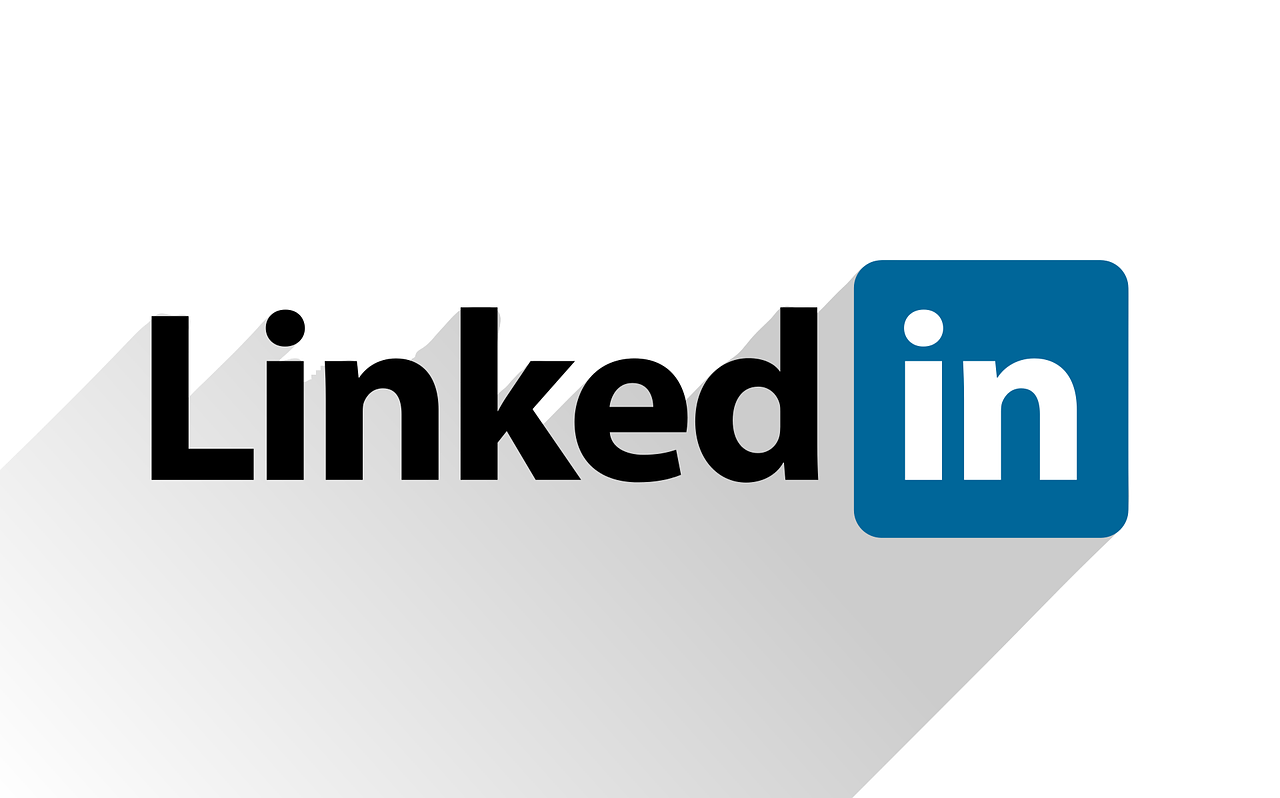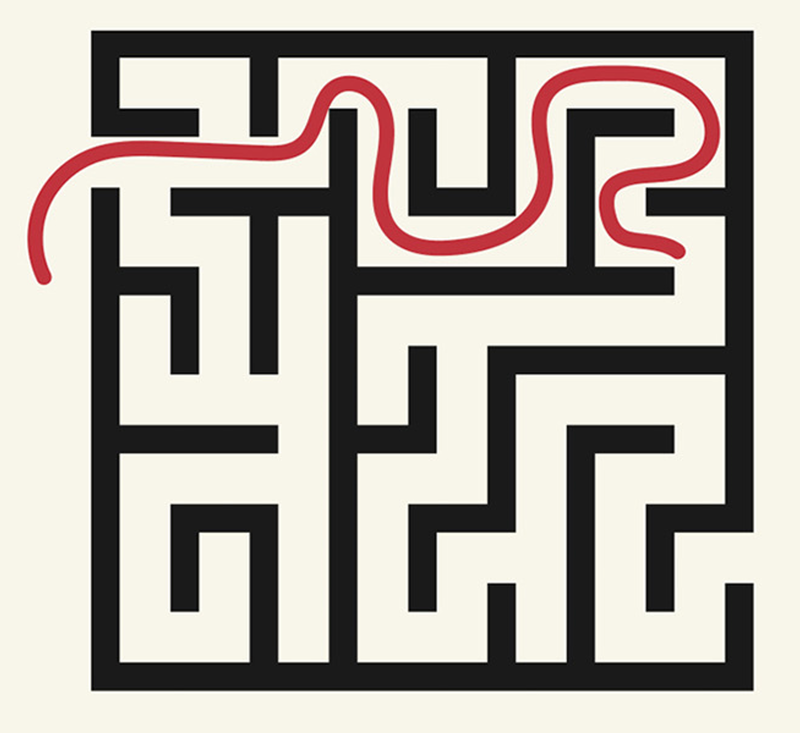|
By Brenda L. Peterson, The Layoff Lady Don't Go It AloneLife is challenging when nothing in particular is happening. When you're going through a job change (especially one you didn't plan), it's even harder. While I'm a fan of self-reliance, I also know the value of finding people who want to support you and letting them do it. You're not weak for needing people. You are smart for planning ahead for what you will need. You Need Help Because This is HardI have been through a post-layoff job transition 7 times, and it is difficult each and every time. There is the fear that it will just never end, and you'll be drifting for eternity trying to find paid work where you can pay your bills--much less in a job you want. You worry that you'll have to settle for something that may be even worse than the worst job you've ever had. You also worry that you'll run out of money and not be able to pay your bills and lose everything you own and everyone you've ever loved. While your rational mind knows this is all pretty unlikely, there will be moments when everything seems hopeless. That's where your support network comes in. No matter how resilient and downright badass you are, doing this alone makes it way harder. People Want to Help You: Make Sure to Let ThemAs an extra added bonus, people want to help you! I'm always inspired by people who come out of the woodwork to check on me, tell me about an open position, thank me for helping them once upon a time, or offer to refer me for a role. Everyone has struggled with something at one time or another, and someone has helped them. Let other people help you. Building Your TeamIt also takes a village to get you through a career transition. Relying on one person for everything is all kinds of stressful. Know that people want to help, and it's a matter of figuring out what you need, letting people know, and reaching out to people when needed. Going through a job search is challenging, even in the best of circumstances. It can be even more challenging if you're starting from a layoff (especially the part where someone else got to make a big, uninvited life decision for you). Types of Help You NeedHere's a starter list of the types of help you may need during your job transition. More specifically, here is some of what I needed. Use this as a starting point and add details as it helps you:
Who Can HelpWhen it comes to help, I start with my inner circle--close friends and family. I'm also sure to widen my support team beyond them, too. I also move beyond that immediate group. I interact with my LinkedIn connections. I tap into online groups including job search groups, The White Box Club, and even LinkedIn groups focusing on networking or a content area (like sales enablement). I interact with in-person membership groups like ATD or the Omaha OD Network. Or I seek out non-work connections through social Meetup groups or activities. Sometimes, I just spend time in coffee shops to indirectly interact with other people. It's a matter of figuring out what you need and finding a person to help. Asking for HelpKnow, too, that there will be times when you need to straight up reach out to someone because you need help. Each person will have their areas of interest and expertise, so be sure to keep that in mind when asking for help. It's helpful to consider who you might contact for different needs. Here are a few cases where I reached out to different people to ask for help:
Learn More
0 Comments
By Brenda L. Peterson, The Layoff Lady The Adventure of Finding a New JobWhether you're gainfully employed but looking for the next right opportunity for you, or you're in career transition, job searching is hard. Here are three unfortunate job searching truths that can help you manage your mindset and emotions as you work through the ups and downs of this process. Truth 1: Job Seeker Time Goes Slower Than Hiring Organization TimeWhen you're a hiring manager, you have a ton going on, and only one of those things is hiring a new person. You're still trying to manage your team, meet deadlines, troubleshoot customer problems, and juggle all the people you're considering for your open position. In an interview, when one candidate asks about the hiring process, you tell them you should know who will move on to the next steps in the process "by the end of this week"--and at the time, you believe that is a reasonable deadline. Then there is a software release with a bug that causes three meetings to be scheduled with big clients, or someone ends up out on sick leave unexpectedly, or your child has to be picked up from daycare with the flu. Friday comes and goes, and getting in touch with a candidate falls off your radar until the next week. Meanwhile, as a job seeker, you put a note on your calendar that you'll know one way or another by Friday. Then you analyze every syllable you uttered in the interview, hoping you didn't say anything awful. You rethink a facial expression you interpreted as approving and wonder if it really was that at all. You suffer through Saturday, Sunday, and Monday, secretly worrying that you will never find another job. Ever. Instead of spiraling, take action to get you closer to your goals. After the interview, email the hiring manager a thank you message and consider sending them a LinkedIn connection request. Put a note on your calendar for a few days after the hiring manager said they would contact you. Reach out to them at that time, including a few pleasantries, reiterating your interest in the role, and asking for an update. Will you get the job? It's hard to tell. Either way, you did your part. Remind yourself that you won't get every job you apply for, and reflect to see what you can learn from it. At the very least, pat yourself on the back that you didn't over-follow up (which is often worse than not following up at all), and be sure to focus on more than one job opportunity at a time. In addition, network with three more people and apply for three more jobs. Truth 2: It's Not "Your Job" Until You Receive A PaycheckInevitably as a job searcher, you run across it. THE job. It's the one you know is meant to be yours. It's perfect--easy commute, a great title, the go-to company, exactly what you are qualified (and want) to do. In your head, you think--this is MY job. You picture your new business cards, where you'll park, and how you'll introduce yourself as the "Director of Awesomeness" for this perfect company. If you're still working, you may be dreaming about the day you hand in your notice--or get excited knowing you won't have to finish a dreaded project because you'll be elsewhere. You think--why should I even bother applying for anything else because this one is SO my job! Except, well, it's not actually your job yet. You're looking at it and seeing yourself in it, but it's not real. You don't work there. No one is sending you a paycheck for it. They don't even know your name yet. You may very well still work at your company in a few months when the project you're not excited about is due. While this MAY be the job you eventually get, it's not a done deal yet. You know what else? It may not end up being your job. Apply for that job--even work hard to get it. Know, though, that you may end up not even getting called in for an interview. This doesn't mean you're not still an amazing professional with valuable qualifications. Remember, there are always many things going on when companies hire. There may be an internal candidate, a previous coworker of the hiring manager, someone who has a referral from a college friend, or someone who has even slightly more of a qualification that didn't make that job posting. When you're a hiring manager, you have a ton going on, and only one of those things is hiring a new person. You're still trying to manage your team, meet deadlines, troubleshoot customer problems, and juggle all the people you're considering for your open position. In an interview, when one candidate asks about the hiring process, you tell them you should know who will move on to the next steps in the process "by the end of this week"--and at the time, you believe that is a reasonable deadline. Then there is a software release with a bug that causes three meetings to be scheduled with big clients, someone unexpectedly ends up on sick leave, or your child has to be picked up from daycare with the flu. Friday comes and goes, and getting in touch with a candidate falls off your radar until the next week. Meanwhile, as a job seeker, you put a note on your calendar that you'll know one way or another by Friday. Then you analyze every syllable you uttered in the interview, hoping you didn't say anything awful. You rethink a facial expression you interpreted as approving and wonder if it really was that at all. You suffer through Saturday, Sunday, and Monday, secretly worrying that you will never find another job. Ever. Instead of spiraling, take action to get you closer to your goals. After the interview, email the hiring manager a thank you message and consider sending them a LinkedIn connection request. Put a note on your calendar for a few days after the hiring manager said they would contact you. Reach out to them then, including a few pleasantries, reiterating your interest in the role, and asking for an update. Will you get the job? It's hard to tell. Either way, you did your part. Remember that you won't get every job you apply for and reflect to see what you can learn from it. At the very least, pat yourself on the back that you didn't over-follow up (which is often worse than not following up at all), and focus on more than one job opportunity at a time. Whenever you fall in love with a job or think of something as "your job,” make an extra effort to apply for additional jobs--or at least game out what happens if you do not get the job. If the job you see yourself in works out, great. If not, you're still working towards your ultimate goal of finding a new role (complete with a paycheck), whichever one that might be. In addition, network with three more people and apply for three more jobs Truth 3: You Only Need One Job.Applying for jobs is a process. Looking back at my records, I have typically applied for between 40 and 100 jobs when I've been in career transition. It's easy to get discouraged. If you're working and looking for something else, you might be more selective in your applications and feel especially attached to an opening you see. Remember, not every personal referral, application, or interview will lead to an offer. Again--sometimes you apply and hear back a fat lot of nothing. Sometimes, you might get a quick rejection from a job only to see it reposted a week later. In those cases, it can be hard to see that they don't even have a good candidate, but they know it's not going to be me. That one smarts. It's also hard when you interview for a role multiple times only to hear that you didn't get the job. Even though they genuinely liked you, you didn't get it. Maybe you were a close second, perhaps they went with an internal candidate, or they ended up not filling the position. There is so much rejection in the job search process that you’ll inevitably feel sad and like maybe there is no hope for you finding the right next job for you. Instead of spiraling, take action to get you closer to your goals. At the end of the day, though, you only need one job. You only need one organization to tell you “Yes.” You only need one place where you and the employer agree to work together. Sometimes, it's helpful to remind yourself that all those no answers get you to the one yes you need. The trick is that you don't know which one will be that yes. You have to keep on keeping on until you find it. In addition, network with three more people and apply for three more jobs. Learn Moreby Brenda L. Peterson, The Layoff Lady Learning About YourselfThe first step of job searching is figuring out what kind of a role you even want. Instead of jumping right into the job you did before, taking a little time for introspection is wise. One good step in this process is finding out more about your strengths. Learning about what you are good at--and how to tell the story of your talents and successes--can help you position yourself well as you apply and interview for a new role. People Are Good at Different ThingsIf you ask many people what they are good at, they would need help putting their natural abilities into words. Taking the StrengthsFinder assessment was a great starting point for me to better understand what I do well. Often, individuals are blind to their own unique talents. In the past, I have wrongly assumed that EVERYONE does the things I do. Like (of course) everyone takes notes regularly in everyday conversations when they learn something--and (of course) everyone makes a seating chart whenever they are in a group of new people to remember names. Turns out--NOPE! These are things I did that not everyone does. This was a huge breakthrough for me. So how do you figure out what you do that not everyone does? Part of the Answer: CliftonStrengths AssessmentThe CliftonStrengths Assessment (previously known as Clifton StrengthsFinder) is a wonderful tool for identifying what you are good at, how that manifests, and how your version of each strength shows up. The 30-minute online assessment includes 177 questions, including paired statements. Then, on a scale, you select which of the statements is more like you. From there, you'll receive a report identifying your top five strengths along with a more detailed description of how those strengths are exhibited in how you interact with the world. Reading a report about yourself (one that is freakishly accurate, by the way) is downright life-changing. After taking the assessment, you'll be able to see your unique talents and have language to explain how what you do sets you apart from others. Having a way to put your abilities into words can translate directly into your resume and how you talk about who you are and what you bring to the table. My Strengths and How They Show UpMy identified strengths, in order, are Strategic, Learner, Arranger, Achiever, and Individualization. Here are a few details I learned from my report and reflecting on those results:
More Strategies for Finding Strengths and TalentsHere are a few other strategies for identifying what you're good at and how you show up in the world:
Learn Moreby Brenda L. Peterson, The Layoff Lady Welcome To The SuckWhether you are in career transition and looking for a new job, or employed and looking for something new, job searching is always challenging--partly due to all of the uncertainty you'll face as you "wait for your life to start again" as you search for the next right role fro you. Suffice it to say that job searching can be full of obstacles that make the process hard to manage. Knowing the possible issues is the first step towards figuring out how to mitigate each challenge and move forward. Here are five unfortunate reasons I have discovered while working through job transitions and a few coping strategies for dealing with each. Reason 1: You Won't Always Interview For "The Perfect Job."Congratulations! You just found THE PERFECT JOB! You have all of the required and preferred qualifications! It's at the right level with your dream company, and you even know someone who works there who will say great things about you! Surely your days of job searching are coming to a close because you are the purple squirrel for THE PERFECT JOB! Enter reality. I'm sorry to say that you may not even manage to get so much as an initial phone screen for this position. Even when you feel like the job was tailor-made for you, it may not work out the way you want. Why might that happen? For one, the position may not actually be available. Some organizations post job openings to gauge interest in the position even though they have no solid plans to hire anytime soon. Conversely, the role may have been open for a while, and the selection process may be well underway. There could also be an internal person who will take the job without additional people being considered. In some cases, companies may have a policy that they need to post positions externally for a given length of time, even though they already have a candidate in mind. Still other organizations may decide part way through the hiring process to leave a position unfilled but not remove it from their posted jobs right away. Assuming the job is really, and for true accepting applicants, there may still be issues. For one, key organizational stakeholders may lack common agreement on what a job role will do and what constitutes being a well-qualified candidate. Decision makers may also each have their own non-negotiable requirements for the qualifications for the potential hire--which may or may not relate to the person's ability to do the job. Remember that no matter what the issue is, it seldom has anything to do with you personally. It's just the life of recruiting for and trying to fill positions with the best candidates they can find--sometimes with people who are (unfortunately) not you. Coping Strategies
Reason 2: People Who Aren't Great At Their Jobs Will Make It Hard.Remember a time at your last job when you had to deal with someone who was not great at what they did for a living? Like the rude salesperson who didn't do their paperwork correctly and caused you to lose out on a great deal? Or the manager who approved your time off request months ago, then decided to "unapprove" it a week before your vacation? During your job search, you'll realize those people exist in other organizations, too, and they sometimes stand between you and the job you want. It could come in the form of an administrative assistant who is supposed to coordinate your travel for an in-person interview--who didn't make reservations and then went on vacation, leaving you scrambling to find someone else to help. It might be the person conducting initial phone interviews who didn't realize that learning experience design and instructional design were the same thing and screened you out. It may even be an insecure possible future coworker who wants to avoid hiring someone who might outshine them. Like the rest of life, things are not always "fair." You may not get the job, even if you are a strong candidate. And so it goes. Coping Strategies
Reason 3: Along The Way, Someone Will Dislike You.I don't know about you, but I am friggin' delightful. I'm also able to connect and get along well with most people. However, during the interview process, no matter who I am or am not, it will not match what someone else thinks the candidate for the position should be. Whether they thought I should have smiled more, made a different outfit choice, or given more detailed examples, someone's negative reaction to who I am may take me out of the running for a job. People often have their own pet theories about what they'd like in a coworker, manager, or direct report. They may be convinced that having the title "account manager" is pivotal for success, that all candidates must have a master's degree, or that people who ride horses are pretentious. You might also have the misfortune of reminding them of the mean girl in high school and BOOM--instant dislike. Again, life isn't necessarily "fair." Coping Strategies
Reason 4. The Process May Be All Over The Place.The job interview process can be anything from one interview to many, many, many interviews, depending on the organization and the role. Typically, I expect to have a phone screen with an entry-level HR person to confirm that I can speak in sentences, an in-person interview with the manager and potential coworkers, and a final interview to demonstrate skills and/or meet with a company VP. In addition, a given employer may want you to do more to show that you have the skills necessary to do the job. For example, you might be asked to pass written assessments, submit work samples, present to a group or complete a project. They may even have you come into the office for the day and "work" as if you are already in the position you are applying for. Interviews could take place over the phone, via web conference, through email, in person, or (more likely) a combination of all of the above. Some companies will have a pre-defined, structured process for the pacing and format of interviews. Other organizations will appear to be making it up as they go along. You may also inadvertently skip steps and realize near the end of the process that you should have talked about a basic topic like salary range or work location. Sometimes, it may seem that the interview process is never-ending because you have yet to talk with every single person in the organization. Coping Strategies
Reason 5: Their "Fast" And Yours May Be Different.I remember being a child and how LONG the year seemed. It always took forever to get from my birthday at the end of August to Christmas. Enter adulthood. I find myself consistently marveling that it's already whatever day/month/season it is because it seems it was just that other day/month/season. In this scenario, your employer is the adult, and you are the child. Some companies will be motivated to fill positions and move quickly. In contrast, others might have days, weeks, or even months between your contact with them--all because something that wasn't filling that position became a priority. What about that two days the employer estimated it would take them to contact you? It may turn into a week or two. Since they're busy addressing customer issues, traveling to client sites, and doing their expense reports, they didn't even realize it took that long. Or, as any job seeker doesn't want to hear, you may not be getting the job. Responding to a candidate quickly usually shows that the potential employer is interested. In many cases, taking longer to respond may indicate lagging interest. Such is how the whole process works. Coping Strategies
Learn MoreBy Brenda L. Peterson, The Layoff Lady So Many Openings!Depending on your chosen field, and your preferred work arrangements, there are a lot of jobs for which you could apply. While remote work availability gives each job applicant many more work options, figuring out how to prioritize open positions can be overwhelming. Here is my recommendation for evaluating open roles and prioritizing which job applications you submit. Searching for Available JobsIn this scenario, we'll look at how someone in a role as a Training Specialist can sort through a the sea of job listings and prioritize which openings should recive applications. To begin, I searched on Indeed.com for the job title Training Specialist. This search generated these results:
Without superpowers, it is not feasible to apply for 631 jobs in one week. Time to Apply and Available TimePersonally, when I decide to apply for a given role, I take about 30 minutes to research the company, customize my resume, and complete my formal application. In a given week, there are 7 days, which is 168 hours. There are not enough hours in a week for me to apply for that many jobs. Even if I somehow managed not to eat, sleep, or do even the most basic self-care, I could only apply for 336 jobs. Closer to the realm of feasibility, if I decided to dedicate a full 40 hours per week solely to applying for jobs, I could apply for 80 jobs—but definitely not well. In addition, working this long and this hard solely on submitting applications can put you on the fast track to burnout. Even half that, dedicating 20 hours solely to applying for jobs, and applying for 40 jobs in a given week, is most likely overkill. More Is Not Necessarily BetterThe more jobs I try to apply for in rapid succession, the less effective I am. While applying for jobs is in some respects, a numbers game, it’s not as easy as applying to all the jobs and knowing that one will work out. This strategy often causes people to waste time applying for roles that aren't a close enough fit. A better strategy is to prioritize jobs that are the best match for your skills and what you want and focus on applying for those well. When I'm in career transition, my goal is usually to apply for three jobs per week. However, if I see several great opportunities or have not searched for a job in a while, I may apply for as many as six. Beyond that, though, my application quality suffers. Prioritizing ApplicationsTo apply for jobs well, you need to determine the best way to prioritize your applications. Instead of the “spray and pray” approach, think through what you want and apply with more purpose. This approach favors quality over quantity and will help you focus your efforts on where you can get better overall results for your time investment. Step 1: Know Key Characteristics of What You WantEarly in your job search, it’s essential to do at least a little soul-searching and be able to articulate what you want. This may include revisiting your values, identifying your strengths, and thinking about the work you enjoy. For example, earlier career Brenda would have a list something like this on what she wanted from a role:
Having a stated list of preferences, and continuing to hone it as you learn more, is your first step in determining which jobs to target. Step 2: Narrowing Your SearchLet's go back to those 631 search results from my Training Specialist searches. By adding additional search parameters, we can narrow our results to jobs that more specifically meet our criteria: Starting with those 43 roles in Omaha:
Starting with those 588 remote jobs:
Step 3: Quick Job Listing ReviewNow that I have a more reasonable number of jobs to go through (12 and 45--57 total), I start to do a cursory review of the short descriptions of each role. No
Yes
I have now reduced the number of jobs that interest me to 31 roles. Step 4: More Detailed Job Listing ReviewNow that I have those 31 jobs in Teal, I look more closely at the following:
I remove jobs where I am not eligible. This includes the following:
I remove jobs with anything that might be a dealbreaker for me. This includes the following:
For the remaining jobs, I give them an initial rating of 1-5 stars and make notes on any areas I might want to explore further. I now have 18 jobs in Teal. Step 5: A Little More ResearchNext, I investigate a few things outside of the immediate job descriptions.
Now, I have 13 jobs In Teal. Step 6: Customize a Resume and Prepare to ApplyFrom the 13 jobs I have listed, I will apply for the jobs I'm most excited about and continue to reassess other openings listed. I will also add, remove, reprioritize, and take notes on specific roles as needed. Learn MoreBy Brenda L. Peterson, The Layoff Lady The Value of Professional NetworkingWhen it comes to job searching, professional networking is a critical component of success. Ideally, you make initial connections with people through LinkedIn (maybe even after meeting them in person or at an online group event). While this is a great start, there is value in building relationships beyond that initial connection. A 1:1 meeting can significantly strengthen a networking relationship and help you learn how you and your new connection can help one another succeed. About 1:1 Networking MeetingsSo what exactly is a networking meeting? Back in the day, I remember hearing people talk about doing "informational interviews." In short, if you were interested in having a particular job or working with a specific company, you would contact an organization or individual and ask if they would meet you for an informational interview. In this 1:1 meeting, which could take place via phone or in person, you might learn about the company, what they are looking for, skills to acquire, and more. It also allowed you to start to build a relationship with a company--or a possible advocate in the person doling out said information. Fast forward to now. Today, a networking meeting is typically between you and another person deciding to spend a half hour-ish together. This meeting, sometimes called a coffee chat, could happen virtually via Zoom or in person, often over coffee. If you're job searching, the typical focus will be on how to progress in your job search. Someone may agree to a networking meeting because you have things in common (like a field of work, background, professional goals), because they are generally committed to helping people when they are job searching, or because you have a mutual acquaintance to ask that person to meet with you to help you out. Networking Meeting = Informal InterviewWhenever you have an opportunity to meet one-on-one with someone, remember that you are taking part in a type of informal interview. Whenever I meet with someone in career transition, my goal is to help them figure out their next steps, offer advice (if they ask and are interested), and give them ideas on further steps they might take, including who they should speak with next While I go in with this idea, the amount of help I'll provide also depends on how this networking meeting goes. Ideally, we have a good, productive conversation, and I think to myself, "I totally want to help this person more." If the meeting goes well, I'll refer them to specific resources that might benefit them (like a networking group they might want to join, a company to check out, someone to follow on LinkedIn) and even put in a good word for them to have a networking meeting with someone else who might get them closer to their goals. In addition, if it goes REALLY well, this is a person who I'll refer to others for openings, pass on job opportunities, and maybe even hire someday. If the meeting doesn't go well, I'll share a few resources, but I may not be willing to help them as actively moving forward. Remember, any interaction you have with people will impact their desire to help you in the future. Types of Networking MeetingsHere are a few common types of networking meetings:
Networking Meeting Best PracticesHere are a few best practices for networking meetings:
The True Power of Networking MeetingsWhen people talk about how they "networked" into a new job, typically, that means they leveraged their initial connections to help make inroads with new contacts, who helped them get closer to a new position. The holy grail of networking meetings is when the person you meet with agrees to introduce you to someone else they know who could help you. That process repeats until you're talking to a hiring manager or influencer who can help you get an interview for a job. Having good networking meetings is a critical step in that process. Learn MoreBy Brenda L. Peterson, The Layoff Lady Messaging With Your ConnectionsOne of the benefits of having connections on LinkedIn is that you can directly send them messages without having a paid subscription. However, this feature has also been used poorly on several occasions. Let's look at how to use LinkedIn messaging effectively to continue building professional relationships and provide some guidelines for how to use this feature well. The Value of Mutually Beneficial RelationshipsTo have a valuable professional newtork, make sure those relationships are mutually beneficial. Networking is about give and take. Make sure that you are adding value along the way. This includes sharing useful content, congratulating people on their accomplishments, and answering one-off questions when people ask for advice. In short, be a good LinkedIn neighbor. If you give more than you take, your LinkedIn connections will be more likely to help you when you need it. Messages That Add ValueWhen directly contacting your LinkedIn connections, make sure you are not overfocused on asking for favors. It is important to provide value first. Here are a few types of messages that give more than they take:
Make sure you are not THAT PERSON who only reaches out when they need a favor. Direct Asks For Help: Worst PracticesAsking for help is an art. First, you need to be willing to ask for help. Next, you need to craft your ask in a way that you have a higher likelihood of getting that help. Here are a few significant issues I’ve seen from people attempting to ask for job search help:
The Worst AsksHere are a three questions that may not get you much of a response:
Why are these not good asks? For one, these are big requests that require a lot of effort to do well. For example:
Direct Asks For Help: Better PracticesHere are a few better asks, but may only work with connections who you know very well and who you have helped in the past:
These requests are specific, which is better, but each is still a sizeable request. The first two may be time intensive. The next two involve your connection putting their reputation on the line to recommend you for a role. The final one requires a block of time on your connection's calendar. Depending on our interactions prior to these requests, their response may vary from “of course!” to no response at all. Again, remember to make sure your asks are aligned with how well you know one another. Direct Asks for Help: Best PracticesAsks are better when they are more specific and less time intensive. It’s also helpful if there is context. Here are a few asks that are more likely to get responses. The requests earlier in this list are more likely to get a response.
People Get To Say NoRemember, when you are asking for help, people will tell you no. More likely than telling you a direct no, they may just not respond. Ever. Keep in mind that job searching, like sales, means that you're going to hear a whole lot of no on the way to that one yes you need. When you need a specific thing, it's useful to ask multiple people for help to give you a better chance of getting a response. It's also not personal. We're each on LinkedIn using it to varying degrees and all trying to accomplish our own goals. Making sure that you are making the relationships mutually beneficial will make it much more likely that people will respond to you and want to lend you a hand when you need it. Learn More
by Brenda L. Peterson, The Layoff Lady Adding Value Through CommunicationIt’s amazing how much of the job search process involves waiting to hear back and trying to communicate with the hiring team in a way that adds value. One easy way to strengthen your relationship with the hiring team is by sending a thank you note. While you could send a paper thank you note, I usually opt for a thank you email message given the prevalence of virtual interactions. But Why?During the interview process, your main goal is to position yourself as someone who would be an excellent direct report to the hiring manager and an awesome team member for your future coworkers. One easy way to be more likable is to be grateful and appreciative of people and their time. Sending a thank you email is a great way to do just that. Thank You Message BasicsSending a thank you message is another chance for your interviewers to see your name and have a positive experience with you. Who doesn’t like to be thanked for doing a thing? Here are key details to include in your post-interview thank you message:
Here’s the core content to include in a thank you message: Hi, Peter. Thanks so much for meeting with me earlier this week to discuss the Super Cool Support Manager position with Best Company Ever. It was great getting a chance to talk with you, Paul, and Mary about the support team and this opportunity. I am definitely interested in learning even more about the role. If you have additional questions, feel free to contact me via email at [email protected] or via text/phone at 555-555-5555. Thanks again! --Brenda Next Level Thank You Message MagicIn addition to the basic message, without writing a full-on manifesto, take the time to add a little more relevant information. This is an excellent opportunity to add more details and value to the interaction. This will also help make you more memorable. Here are a few suggested points to cover:
Here's what the message to the hiring manager might look like: Hi, Peter. Thanks so much for meeting with me earlier this week to discuss the Super Cool Support Manager position with Best Company Ever. It was great talking with you, Paul, and Mary about the support team and this opportunity. Learning about your new knowledge base and help desk ticket prioritization model was great. I’m excited to join an organization committed to documentation and continuous process improvement. As we discussed, here are a few relevant skills I bring to the table:
In addition, here is the link to the article I mentioned entitled “18 Knowledge Base Examples That Get It Right." Chapter 9 in this article covers some of the metrics we were discussing: https://www.helpscout.com/helpu/knowledge-base-examples/ If you have additional questions, please feel free to contact me via email at [email protected] or by text/phone at 555-555-5555. It was great getting a chance to talk with you—and I hope you have a great time on your fly-fishing trip this weekend! --Brenda Here's what a message to one of your future coworkers, Mary, might look like: Hi, Mary. It was great meeting you earlier this week to discuss the Super Cool Support Manager position with Best Company Ever. I enjoyed talking with you, Paul, and Peter about the support team and this opportunity. My experience working at Not Quite As Cool Company will help me add value to the team. I also hope you have fun on your upcoming trip to Minneapolis. As a fellow coffee lover, I suggest you stop at Dogwood Coffee Company. It’s honestly the best cup of coffee I’ve ever had and well worth the trip. It sounds like you’ll be staying not too far from their Northeast location. Here is the address: https://www.dogwoodcoffee.com/pages/locations If you have additional questions for me (professional or coffee related), feel free to contact me via email at [email protected] or via text/phone at 555-555-5555. Thanks again! --Brenda Thank You Note TimingI used to quickly send thank you messages right after I completed an interview. That way, the message would arrive in each person's inbox within a half hour after our conversation. Now, I wait until the next day, or even two days, to send the thank you. This puts time between our initial conversation and when they get this "remember me--I exist, and I'm awesome" message. Much like commercials, ads, or billboards remind you of the existence of a product or service you might want, I used my thank you messages as a second touchpoint with that person. Learn MoreBy Brenda L. Peterson, The Layoff Lady The Challenge: Describing What You DoWhether you're searching for a new role or thinking about your professional development, not having the right words to describe your skillset can hinder your progress. Identifying your career keywords will help you create effective messaging for your LinkedIn profile, resume, conversations with colleagues, and other written communications like email and social media posts. Where To Start: LinkedIn and KeywordsHere is my recommendation for how to begin gathering keywords that align with your chosen profession:
Let me take you through an example. Search for Your Target Job TitleI searched LinkedIn's Jobs section for Business Partner Organizational Development in the United States. From the results, I selected ten currently open positions to review further (because I'm an overachiever like that). Here are those job titles:
Lesson Learned: When you search for a job title, your results will include a variety of titles different companies use. Be sure to review the job description to learn more about what that company expects from that role. The duties for the same job title might vary widely from company to company, as might the terminology they use to describe it. Identifying Skills and KeywordsTotal Number of Different Skills Returned for All Ten Jobs For the 10 jobs I reviewed, 69 different skills were included in the results. For context, if all roles had the exact same skills, this number would be 10. If all of the roles had different skills, this number would be 100. Lesson Learned: Not only will job titles vary across organizations, but what skills they value can also differ. Be sure to review the job description to learn more about what skills the company thinks will help make someone in that role successful. Specific Skills Returned For More Than One Job Several skills came up more than once across those ten jobs. Here is the number of times a specific skill appeared for more than one role:
Lesson Learned: Even if there is not widespread agreement on the terminology used across organizations, some keywords will show up more often. Consider including popular keywords in your skills section on your LinkedIn profile and in your resume. Different Keywords for Similar Skills While specific keywords like "communication" and "problem solving" appeared more than once within the 10 job descriptions, several related terms might be included instead. Here are a few groups of terms that take different approaches to describing similar concepts:
Lesson Learned: When you look at the groupings of keywords, you can see the broader areas where roles like this would operate. Each company may use slightly different terminology regarding the skills that they value. When you talk about the work you do, consider weaving some of these words into your stories. What Do You Think?How do you identify the right keywords to use to describe what you do? Share your thoughts in the comments. Learn More
By Brenda L. Peterson, The Layoff Lady About The Seven Layoff LessonsThrough my seven layoffs and many conversations with others in post-layoff career transition, I have learned seven core lessons:
About Layoff Lesson Seven: Assess, Adapt, and Rise AboveWhen you’re searching for a new job, there are always challenges. Like with any system you put in place to solve a problem, it’s helpful to compare the actions you’ve been taking to your results. It's valuable to review where you are getting stuck during the hiring process and updating what you're doing so you can see more success. Let's look at some of the challenges you might face. Interview Progression IssuesAfter you apply for a job, your goal is to be selected for an interview. That process usually includes an initial phone screen, one or more face-to-face interviews, and then a job offer. Let’s look at possible places you might get stuck and how to evolve your approach.
Additional Job Search ChallengesEven when you have good results with your overall job search and hear back from companies on specific roles, you’ll still face challenges. Let’s look at a few:
You are the CEO of YouAt the end of the day, remember your role as the CEO of You and make a decision that aligns with your overall career and life goals. That might mean adjusting your requirements as your search goes on or holding out for what you really want. You get to decide what matters most to you and change your mind as needed. For The Whole StoryFor all the information on each of the seven lessons pick up a copy of my book Seven Lessons From Seven Layoffs: A Guide. Learn More |

Just get laid off?
Click here for info on what to do first. Author7-time layoff survivor Brenda L. Peterson, The Layoff Lady, waxes poetic on layoffs, job transitions, & career resilience. Buy The Book!Were you recently laid off from your job and need a roadmap for what's next? Pick up a copy of my book, Seven Lessons From Seven Layoffs: A Guide!
Categories
All
Archives
July 2024
|























